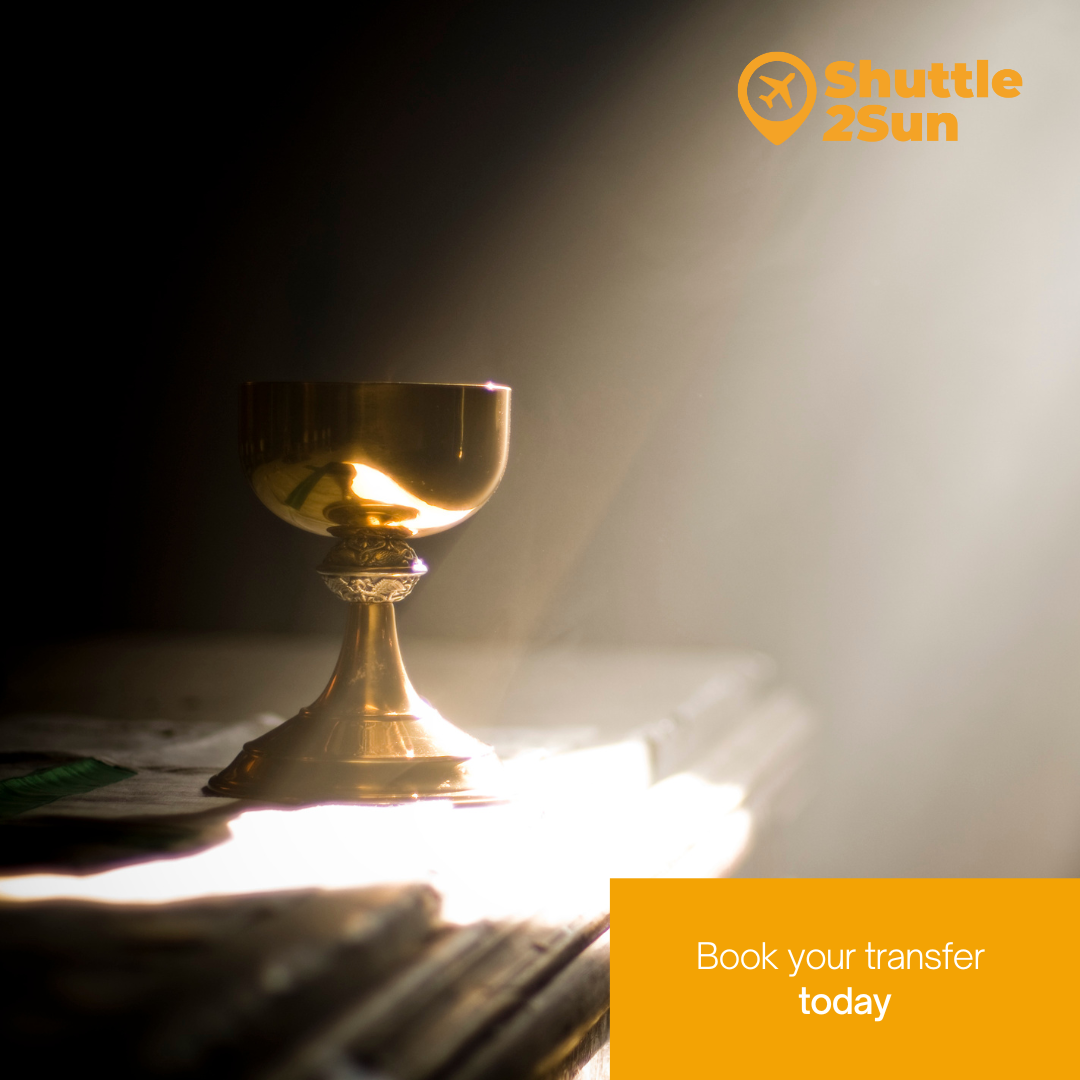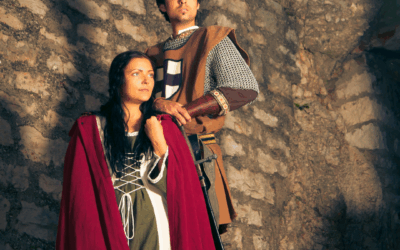Montserrat is one of the most visited mountains around Barcelona because of its mystical and religious environment. Year after year, thousands of tourists and onlookers visit the monastery to learn about its history. What many do not know is that it has a past full of myths and legends, which envelop the rocky formation with a magical atmosphere of the most interesting.
In our previous post on “Montserrat and its secrets: Balneari de la Puda“, we were able to learn all about what lies hidden in the ruins of these ancient thermal waters with curative properties, which became, at the end of the 19th century and beginning of the 20th, a luxury destination much sought after by the wealthiest families. In this post, we will continue to unveil the ins and outs and secrets hidden in Montserrat’s facilities, focusing, in this case, on the Virgin of La Moreneta and Heinrich Himmler’s visit to the monastery, in search of the Holy Grail.
Get to Barcelona or the surrounding area with Shuttle2Sun‘s low-cost and sustainable shared transfer services and private transfer services from Barcelona airport, Barcelona port, Reus airport, Girona airport and Camp de Tarragona AVE train station. Remember that you can book your transfer up to 24 hours in advance.
The true origin of La Moreneta
The Virgin of Montserrat, also known as La Moreneta, has become the patron saint of Catalonia, causing thousands of pilgrims and onlookers to flock to the church of Montserrat.
The story of La Moreneta is shrouded in legends dating back to the 9th century. According to tradition, a group of shepherds found the image of the Virgin in a cave in the mountain of Montserrat, the Holy Cave, attracted by a mysterious light. On discovering the image, they tried to carry it to the nearby town of Manresa, but the statue became so heavy that they could not move it. They interpreted this as a sign that the Virgin wished to remain in Montserrat, and so the sanctuary dedicated to her was born.
Legends also tell that the Virgin was carved by Saint Luke, and that Saint Peter was supposed to take her to Rome, but she was kept in this cave, so that she would not be stolen.
La Moreneta, almost a metre tall, is known for her characteristic dark appearance, which contrasts markedly with her golden clothing. This image, carved in wood and dating from the 12th century, depicts the Virgin Mary with the Child Jesus on her lap. Its black colour has given rise to numerous theories over the years, as it has been proven that this is not its original colour, but that the Virgin was originally white.

Some suggest that this is due to the oxidation of the varnish originally applied, while others believe that the colouring could be due to the smoke from the candles and oil lamps lit by devotees over the centuries. Even so, it has been decided to maintain its current colour, as a sign of its identity.
Also worthy of note are the elements that support both figures. In the case of the Child Jesus, this one holds a pine cone in his left hand, as a symbol of fertility; and, in the case of the Virgin, this one has a sphere which, according to historians, is an apple. However, some claim that it is a reference to the Earth. It would not be strange if this image had not been carved at a time when the Earth was still considered to be flat. That is why it is believed that it may have been a hidden message, on the part of the artist.
Remember that with Shuttle2Sun‘s shared transfer services and private transfer services, low-cost and sustainable, you can get to any location on the Catalan coast, from Barcelona airport, Barcelona port, Reus airport, Girona airport and Camp de Tarragona AVE train station.

Himmler and his quest for the Holy Grail
The Holy Grail, the cup in which Jesus and his disciples supposedly drank during the Last Supper and in which Christ’s blood was collected after his crucifixion, has always been a relic shrouded in mystery.
Its search has been a recurring theme in literature, cinema and mythology, but one of the most enigmatic and real expeditions occurred during the Second World War. Heinrich Himmler, one of the most prominent leaders of the Nazi regime and Hitler‘s right-hand man, went to Montserrat in search of the Holy Grail, as he believed it was hidden in this sanctuary and that its acquisition could guarantee the victory of Nazis.
According to some versions of Arthurian legend, the Grail was guarded by an order of monks in a castle hidden in a sacred mountain, which fitted the description of Montserrat perfectly.
In October 1940, the Hendaye meeting took place between Adolf Hitler and Francisco Franco, the Spanish dictator. Coinciding with this meeting, Himmler travelled to various Spanish cities, such as San Sebastian, Madrid, Toledo and Barcelona. During his visit in Barcelona, he insisted on going to Montserrat, which raised suspicions about his real intentions. Finally, Himmler managed to reach the monastery on the 23rd of October, accompanied by a small group of Schutzstaffel (SS) officers.
The leader’s arrival was greeted with surprise and some discomfort by the Benedictine monks. During his stay, Himmler conversed with the monk Andreu Ripoll, as he was the only one who spoke German, but still found no clue as to the whereabouts of the Holy Grail.
Ultimately, Himmler’s expedition to Montserrat was a reminder of how legends and history can intertwine in unexpected ways, and how the quest for power has led people to explore the most sacred and mysterious corners of the world.
If you want to learn more about the legends and secrets hidden in Montserrat, remember that with Shuttle2Sun‘s low-cost and sustainable shared transfer services and private transfer services, you can travel to any town in the area, from Barcelona airport, Barcelona port, Reus airport, Girona airport and Camp de Tarragona AVE train station. Remember that you can book your transfer up to 24 hours in advance.



